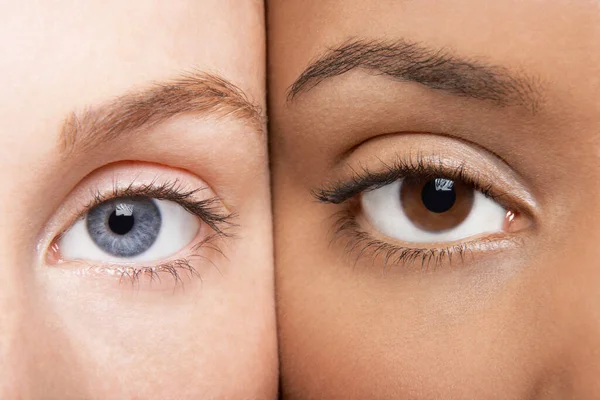Celeb 99
celeb99
These 12 Eye Health Myths may shock you because many believe them to be true. The myths and misconceptions surrounding eye health are widespread, often leading to confusion about the best practices for maintaining good vision. In this article, we will debunk some of the most common myths about eye health and uncover the facts that lie beneath. Our eyes are invaluable assets that allow us to experience the world, and it is essential to separate fact from fiction to ensure the best possible care for our vision.
Throughout this exploration, we will address a variety of myths, including the belief that;

Myth #1: Carrots cure nearsightedness and farsightedness.
This is a myth. While carrots are a great source of vitamin A and other eye-healthy nutrients, eating carrots alone is not enough to cure nearsightedness or farsightedness. These are common refractive errors that are typically corrected with eyeglasses, contact lenses, or refractive surgery. While vitamin A and beta-carotene in carrots support eye health and may help protect against conditions like cataracts, they do not reverse or improve the effects of nearsightedness or farsightedness. Therefore, while carrots are beneficial for overall eye health, they do not cure nearsightedness or farsightedness [sources 1,2,3].
Myth #2: Reading in low light will damage your eyes.
It’s real that reading in low light may cause eye strain and fatigue, but it will not damage your eyes. The latest studies have shown that this is a popular myth and that reading in dim light won’t hurt your eyes. However, it can make the eyes more tired more quickly, potentially leading to symptoms such as headaches, itchy eyes, blurred vision, and light sensitivity. Therefore, it’s recommended to read in adequate lighting to minimize eye strain and discomfort [4]
Myth #3: You’re born with adult-sized eyes.
Babies are not born with adult-sized eyes. In fact, a baby’s eyes are only about two-thirds of their final size at birth. The average length of a newborn baby’s eye is about 16.5 millimeters, while an adult’s eye is about 24 millimeters. The eyes undergo considerable growth, especially during the first two years of life, with a second growth spurt occurring around puberty. Therefore, the size of the eyes at birth is significantly smaller than that of adult eyes, and they continue to grow throughout childhood and adolescence[5]
Myth #4: Kids can’t get an eye exam until they can read.
Children can indeed get eye exams even if they cannot read yet. In fact, eye exams for infants and young children are different from exams for older children and adults. Eye exams for kids often include tests for visual acuity, depth perception, color vision, and eye alignment, which do not require the child to read or understand the instructions. Regular eye exams are essential for detecting vision problems early in children, as some eye conditions can interfere with normal vision development. The American Optometric Association recommends that children have their first eye exam at six months, and then every year after that [6,7].
Myth #5: Wearing over-the-counter reading glasses will weaken your eyes.
Wearing over-the-counter reading glasses will not weaken your eyes. These glasses are designed to help people with presbyopia, a common age-related condition that causes difficulty in focusing on close objects. While over-the-counter reading glasses may not be the most stylish or well-made glasses, they can help improve vision and reduce eye strain. However, it is essential to wear the correct prescription glasses to ensure optimal eye health and vision comfort [8].
Myth #6: Vision loss is unpreventable.
Over 80% of vision loss can be prevented by early detection and treatment. Regular eye exams and proper safety eyewear can play a significant role in preserving vision. Your optometrist has the training and equipment to help maintain your eye health by predicting, diagnosing, and minimizing the loss of vision. Therefore, it is essential to have regular eye exams and take necessary precautions to protect your eyes and prevent vision loss [9,10].
Myth #7: Strabismus – If you cross your eyes, they may stay that way permanently.
Eye crossing is a voluntary action that involves the six muscles that control eye movement. It is a common myth that if you cross your eyes, they may stay that way permanently. However, this is not true. Crossing your eyes voluntarily may cause muscle fatigue, but it won’t cause any permanent damage. The eyes are meant to move in many different directions, and looking left, right, up, or down will not force your eyes to stay permanently crossed. Crossed eyes typically result from disease, uncorrected vision, or from muscle or nerve damage, not from forcing them to cross [11].
Myth #8: All babies are born with blue eyes
It’s a myth that all babies are born with blue eyes. While it is common for some babies to be born with blue eyes, the majority are not. Research has shown that around two-thirds of newborns are born with brown eyes, while only about one in five have blue eyes. Eye color is determined by genetics and the presence of the pigment melanin in the iris. As a result, a baby’s eye color can continue to change for several months after birth, and in some cases, even up to the age of two. Therefore, it is a myth that all babies are born with blue eyes, as eye color is determined by a complex interplay of genetic and biological factors [12,13].
Myth #9: Color blindness only affects men.
This is a myth. While color blindness, also known as color vision deficiency (CVD), is significantly more common in men, it can affect women as well. About 1 in 200 females have some form of color blindness, with red-green color blindness being the most common type. CVD is most typically caused by different genetic variations, and it is often inherited from the mother. The condition is less common in females because they would need to inherit the affected gene from both parents to exhibit the condition, making it less prevalent in women. Therefore, while men are far more likely to be affected by color blindness, it can also affect women [14].
Myth #10: Wearing glasses weakens the eyes and makes vision worse
This is a common misconception. Wearing glasses is not associated with weakening the eyes or making vision worse. In fact, glasses are designed to help improve vision and correct various vision problems, such as nearsightedness, farsightedness, and presbyopia. While some people may experience a temporary worsening of their vision when removing their glasses, this is because their lenses have continued to deteriorate with age, not because the glasses themselves are causing the vision to worsen [15,16].
Myth #11: Wearing someone else’s glasses can damage your eyes
Wearing someone else’s glasses won’t damage your eyes, but it can cause discomfort and vision issues. If the prescription is incorrect, it can lead to unnecessary discomfort, blurred vision, eye strain, headache, or dizziness. It’s important not to share contact lenses with anyone else, as this can spread infection and damage the health of your eyes. While wearing someone else’s glasses for a short time as an adult may not harm your eyes, doing so for an extended period, especially for a young child, can be harmful. It’s best to avoid wearing another person’s glasses and to have your own prescription to ensure optimal eye health and vision comfort [17].
Myth #12: Having 20/20 vision means your eyes are perfectly healthy.
This is a common misconception. While 20/20 vision indicates clear central vision at a distance, it does not guarantee overall eye health. A person with 20/20 vision can still have other eye and vision problems that may impact the health of their eyes, such as glaucoma, retinal disease, or corneal conditions. Additionally, 20/20 vision does not assess various other measures of vision, including reading distance, peripheral vision, eye focusing, eye movement, eye coordination, color vision, and visual perceptual skills. Therefore, it’s important to have regular comprehensive eye exams to ensure the health of your eyes, even if you have 20/20 vision [18,19,].
How to Care for Your Eyes
To care for your eyes, you can follow these essential tips:
Maintain a healthy diet: Consume foods rich in vitamins A, C, E, lutein, and zeaxanthin, such as leafy greens, fish, eggs, nuts, and beans.
Avoid smoking: Smoking increases the risk of developing age-related eye diseases such as macular degeneration and cataracts.
Wear protective eyewear: Use safety glasses or protective goggles when engaging in hazardous activities or sports.
Take regular breaks: Rest your eyes every 20 minutes by looking at least 20 feet away for 20 seconds, especially when using computers or smartphones.
Get regular eye exams: Visit your eye care provider regularly for dilated eye exams, especially if you are over 60 years old.
Use sunglasses: Choose sunglasses that block 99% or 100% of both UVA and UVB radiation from the sun.
Wear prescription glasses: If you need glasses, wear them to correct your vision and prevent eye strain.
Stay hydrated: Drink enough water to prevent eye dryness and irritation.
Know your family’s eye history: Some eye diseases are inherited, so inform your eye care provider if anyone in your family has had eye problems.
Practice good hygiene: Wash your hands before touching or rubbing your eyes, and follow the recommended schedule for cleaning and wearing contact lenses.
By following these tips, you can maintain good eye health and protect your vision from potential threats. Regular eye exams are essential for early detection and treatment of eye diseases.
Note: This article is written based on scientific evidence found by the Celeb99.com team. Sources are duly referenced with parameters hyperlinked to source websites and are clickable for reference.
The post 12 Eye Health Myths and How to Care for Your Eyes appeared first on Celeb 99.






